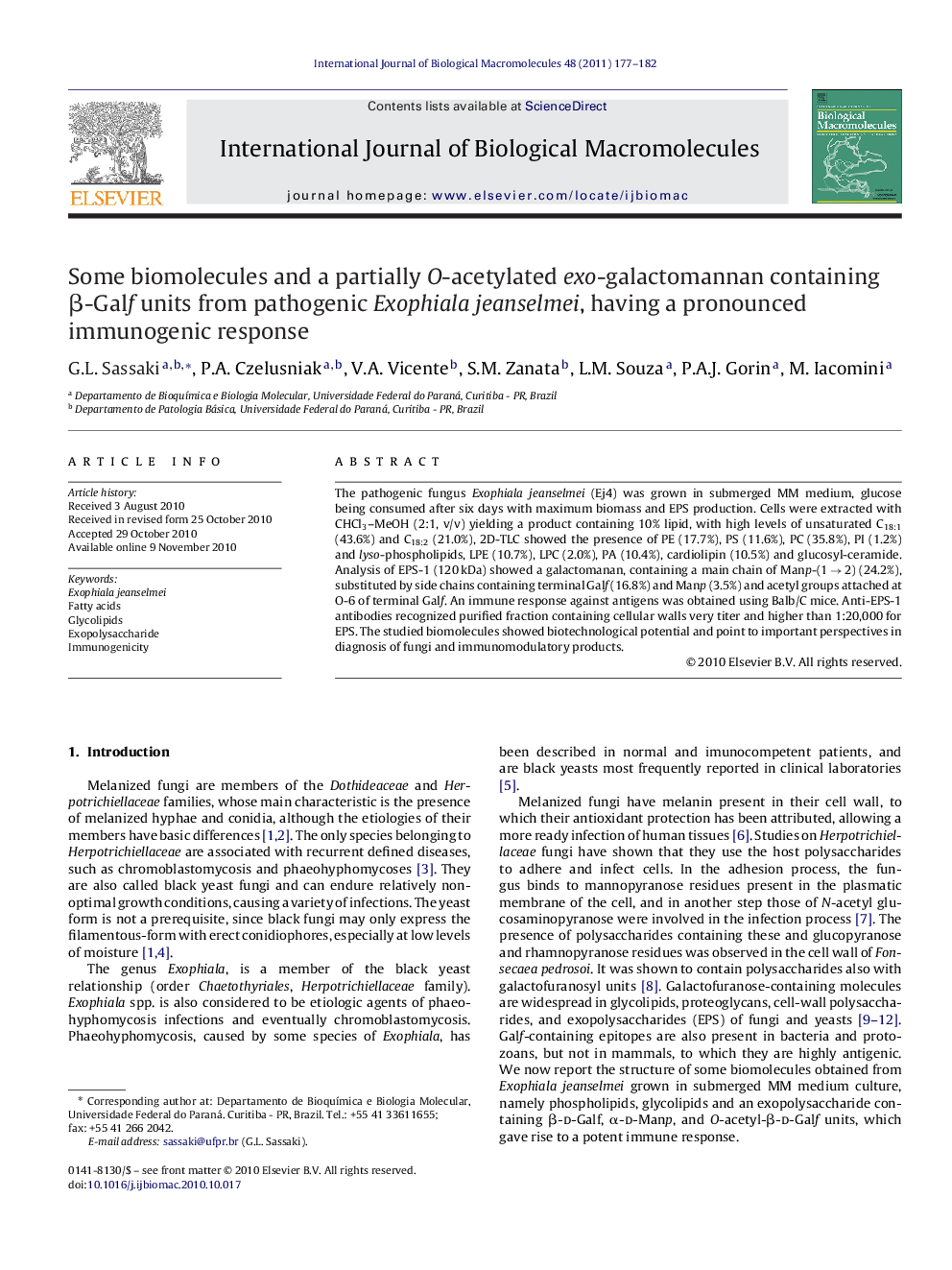| Article ID | Journal | Published Year | Pages | File Type |
|---|---|---|---|---|
| 1987306 | International Journal of Biological Macromolecules | 2011 | 6 Pages |
Abstract
The pathogenic fungus Exophiala jeanselmei (Ej4) was grown in submerged MM medium, glucose being consumed after six days with maximum biomass and EPS production. Cells were extracted with CHCl3-MeOH (2:1, v/v) yielding a product containing 10% lipid, with high levels of unsaturated C18:1 (43.6%) and C18:2 (21.0%), 2D-TLC showed the presence of PE (17.7%), PS (11.6%), PC (35.8%), PI (1.2%) and lyso-phospholipids, LPE (10.7%), LPC (2.0%), PA (10.4%), cardiolipin (10.5%) and glucosyl-ceramide. Analysis of EPS-1 (120 kDa) showed a galactomanan, containing a main chain of Manp-(1 â 2) (24.2%), substituted by side chains containing terminal Galf (16.8%) and Manp (3.5%) and acetyl groups attached at O-6 of terminal Galf. An immune response against antigens was obtained using Balb/C mice. Anti-EPS-1 antibodies recognized purified fraction containing cellular walls very titer and higher than 1:20,000 for EPS. The studied biomolecules showed biotechnological potential and point to important perspectives in diagnosis of fungi and immunomodulatory products.
Related Topics
Life Sciences
Biochemistry, Genetics and Molecular Biology
Biochemistry
Authors
G.L. Sassaki, P.A. Czelusniak, V.A. Vicente, S.M. Zanata, L.M. Souza, P.A.J. Gorin, M. Iacomini,
